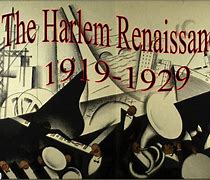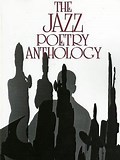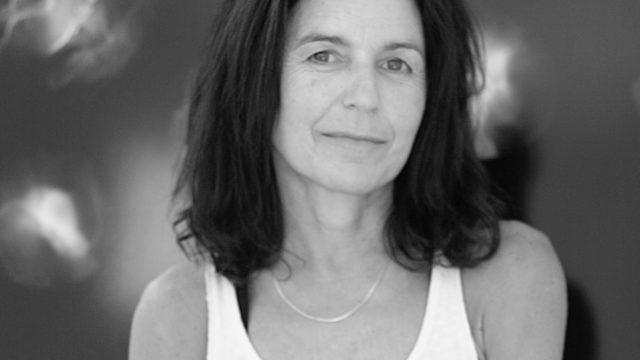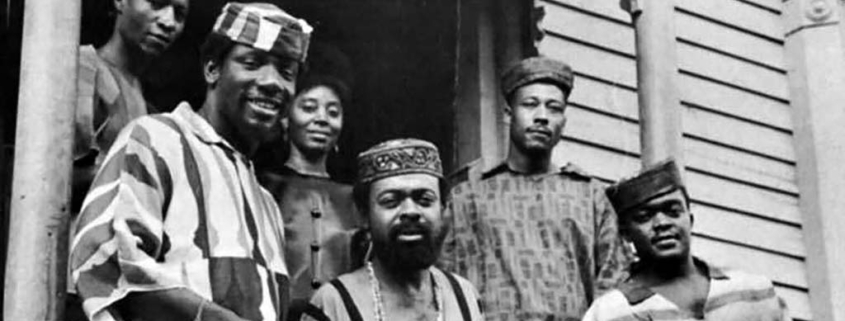HOW JAZZ INFORMS POETRY (plus special news announcements)
HOW JAZZ INFORMS POETRY
by Norman Warwick
Today´s cover picture above shows Amiri Baraka (centre) and Yusef Iman (second from left) with musicians and actors of the black arts movement, Spirit House, Newark, New Jersey, 1966. The photograph is held by Fair Use Image, Courtesy Howard University Digital Collections (mss_5584), but we employ it today in our not-for-profit piece about where this movement and these musicians grew from.
Jazz poetry is a literary genre defined as poetry necessarily informed by jazz music—that is, poetry in which the poet responds to and writes about jazz. Jazz poetry, like the music itself, encompasses a variety of forms, rhythms, and sounds. Beginning with the birth of blues and jazz at the start of the twentieth century, jazz poetry is can be seen as a thread that runs through the Harlem Renaissance, the Beat movement, and the Black Arts Movement and that remains vibrant today. From early blues to free jazz to experimental music, jazz poets use their appreciation for the music as poetic inspiration.

The Harlem Renaissance was an intellectual and cultural revival of African American music, dance, art, fashion, literature, theater and politics centered in Harlem, Manhattan, New York City, spanning the 1920s and 1930s. At the time, it was known as the New Negro Movement, named after The New Negro, a 1925 anthology edited by Alain Locke. The movement also included the new African-American cultural expressions across the urban areas in the Northeast and Midwest United States affected by a renewed militancy in the general struggle for civil rights for African-Americans that occurred in the wake of civil rights struggles in the then-still-segregated US Armed Forces in WWI and which was further inspired by the NAACP, the Garveyite movement and the Russian Revolution, combined with the Great Migration of African-American workers fleeing the racist conditions of the Jim Crow Deep South, Harlem being the final destination of the largest number of those who migrated north. Though it was centred in the Harlem neighbourhood, many francophone black writers from African and Caribbean colonies, who lived in Paris, were also influenced by the movement, which spanned from about 1918 until the mid-1930s. Many of its ideas lived on much longer. The zenith of this ´flowering of Negro literature´, as James Weldon Johnson preferred to call the Harlem Renaissance, took place between 1924—when Opportunity: A Journal Of Negro Life hosted a party for black writers where many white publishers were in attendance—and 1929, the year of the stock-market crash and the beginning of the Great Depression. The Harlem Renaissance is considered to have been a rebirth of the African-American arts. Many people would argue that the Harlem Renaissance never ended and has continued to be an important cultural force in the United States through the decades: from the age of stride piano jazz and blues to the ages of bebop, rock and roll, soul, disco and hip-hop.
The Beat Movement, also called Beat Generation, was an American social and literary movement originating in the middle years of the twentieth century. it had its epi-centre in the bohemian artist communities of San Francisco’s North Beach, Los Angeles’ Venice West, and New York City’s Greenwich Village. Its adherents, self-styled as “beat” (originally meaning “weary,” but later also connoting a musical sense, a “beatific” spirituality, and other meanings) but derisively called beatniks. The Beat Movement expressed its alienation from conventional, or “square,” society by adopting a style of dress, manners, and ´hip´ vocabulary borrowed from jazz musicians. They advocated personal release, purification, and illumination through the heightened sensory awareness that might be induced by drugs, jazz, sex, or the disciplines of Zen Buddhism. The Beats and their advocates found the joylessness and purposelessness of modern society sufficient justification for both withdrawal and protest.


Beat poets sought to transform poetry into an expression of genuine lived experience. They read their work, sometimes to the accompaniment of progressive jazz, in such Beat strongholds as the Coexistence Bagel Shop and Lawrence Ferlinghetti’s City Lights bookstore in San Francisco. The verse was frequently chaotic and liberally sprinkled with obscenities and frank references to sex, all intended to liberate poetry from academic preciosity. Allen Ginsberg’s Howl (right)became the most representative poetic expression of the Beat movement: the poem itself embodied the essence of the Beats’ voice; its first performance, in 1955, was a disorderly celebration; and the obscenity trial, in 1957, that followed its publication showed the movement’s social and political relevance. Ginsberg and other major figures of the movement, such as the novelist Jack Kerouac, (above left) advocated a kind of free, unstructured composition in which the writer put down his thoughts and feelings without plan or revision in order to convey the immediacy of experience.
As the sixties dawned, the Beat movement as a fad had begun to fade, though its experiments with form and its social engagement continued and had lasting effects. The movement produced a number of significant writers, including Ferlinghetti, Gregory Corso, Philip Whalen, and Gary Snyder. the poet LeRoi Jones had also been part of the Beat circle and published their work in his magazine Yugen, though he broke with the movement in the 1960s. The Beats paved the way for broader acceptance of other unorthodox and previously ignored writers, such as the Black Mountain poets and the novelist William S. Burroughs.
Jazz artists make appearances in jazz poems as well: Louis Armstrong, John Coltrane, Miles Davis, Dizzy Gillespie, Billie Holiday, Charles Mingus, Thelonious Monk, Charlie Parker, Sonny Rollins, Bessie Smith, and Lester Young are just some of the muses for jazz poetry.
But writing about jazz poetry is, as they say, like dancing about architecture. Perhaps the form can be best understood through a few lines from the poets themselves:
Droning a drowsy syncopated tune,
Rocking back and forth to a mellow croon,
I heard a Negro play.
Down on Lenox Avenue the other night
By the pale dull pallor of an old gas light
He did a lazy sway . . .
He did a lazy sway . . .
To the tune o’ those Weary Blues.
—from The Weary Blues by Langston Hughes
I crisscrossed with Monk
Wailed with Bud
Counted every star with Stitt
Sang “Don’t Blame Me” with Sarah
Wore a flower like Billie
Screamed in the range of Dinah
& scatted “How High the Moon” with Ella Fitzgerald
as she blew roof off the Shrine Auditorium
Jazz at the Philharmonic
—from Jazz Fan Looks Backby Jayne Cortez
Poets in the jazz tradition include Amiri Baraka, Marvin Bell, Sterling Brown, Hayden Carruth, Cortez, Hughes, Michael S. Harper, Jack Kerouac, Yusef Komunyaaka, Nathaniel Mackey, Mina Loy, Kenneth Rexroth, and Sonia Sanchez.
The Black Arts Movement (BAM) was an African American-led art movement, active during the sixties and seventies of the last century.. Through activism and art, BAM created new cultural institutions and conveyed a message of black pride.
Famously referred to by Larry Neal as the ´aesthetic and spiritual sister of Black Power´, BAM applied these same political ideas to art and literature. The movement resisted traditional Western influences and found new ways to present the black experience.
The poet and playwright Amiri Baraka is widely recognized as the founder of BAM. In 1965, he established the Black Arts Repertory Theatre School (BART/S) in Harlem. Baraka’s example inspired many others to create organizations across the United States. While these organizations were short-lived, their work has had a lasting influence.

Jazz Poetry Anthology, edited by Sascha Feinstein and Komunyakaa, (Indiana University Press, 1991) is comprehensive and informative. Since the beginning of the twentieth century, poets have responded to jazzin all its musical and cultural overtones. The poems here cover the range of jazz itself: from early blues to free jazz and experimental music.

The Jazz Poetry Anthology, Volume 2, edited by Feinstein and Komunyakaa (Indiana University Press, 1996); and Jazz Poetry: From the 1920s to the Present, by Feinstein (Greenwood Publishing Group, 1997). This volume takes that attitude that ´poetry is the jazz of writing´. Hence these poems, influenced by jazz and using it’s rhythms, become jazz poetry. Lenny Bruce was accused early in his career of spending all his time trying to make the musos laugh, but he responded to this by saying it was because ´jazz musicians appreciated abstract concepts more readily than most people, as that was what modern jazz was all about – abstract improvisation.´
Together, jazz and poetry might have found a respectability they have never actively sought. Whatever the case, in April 2002, the Smithsonian’s National Museum of American History launched Jazz Appreciation Month (JAM) to draw greater public attention to the extraordinary heritage and history of jazz and its importance as an American cultural institution. Every April, the Smithsonian produces a jazz poetry event as part of JAM and National Poetry Month.

newsflash logo Clare Teal and Her Trio
The Haymarket
Wote Street, Basingstoke
Hampshire RG21 7NW
Sunday 26 September 2021 | 7:30pm
£25 (includes £3 booking fee)

With her stunning voice and encyclopaedic knowledge of jazz, award-winning Clare Teal (left) is a sought-after singer as well as a prolific recording artist.
A popular former Radio 2 presenter and recent addition to the Jazz FM family, Clare’s concerts with her Trio are constantly evolving and are renowned across the country for their fabulous arrangements interspersed with Clare’s warm and witty storytelling.
jir This brand-new show promises a rich jazz-infused repertoire in its many forms bringing you more exhilarating swing as Clare and her Trio celebrate 100 years of pop music. Featuring some of the greatest songs ever written from the Great American and British Song books and contemporary writers.
As one of the UK’s greatest interpreters of song and much-loved performers, Clare and her Trio guarantee an evening of inspired music and unbridled entertainment performed by the very best.

newsflash logo THE LANZAROTE ART GALLERY presents
A new waste of creative energy, in “De otros mundos” where the diverse and heterogeneous imaginings of Nuria del Pino’s work are linked, over-flowing with forecasts and leading us to a better ing the vitality of the most characteristic features of her painting, the versatility in the use of different languages and the expressiveness she has achieved in the representation of her most recurrent motifs.
The musicality of the composition, its lightness and stained glass luminosity, bring to the work a great lyrical breath, a choreography of lights that as halos of eternity or cosmic spaces gravitate on figures and images already interviewed by the intuitive gaze of an artist who advances naturally in the eagerness to validate the adequacy of the technique to the desire to triangulate universe and destiny.
Avoiding nostalgia, but without fear of adventure, the artist has chosen methacrylate as a support to develop with master efficiency and generate a singular, contrasting, suggestive and emotional dialogue between the recent yesterday and its most immediate present. The observation of these two disparate levels or planes of expression gives rise to a contradictory feeling in which the tension ends up merging into the emotion.
The excellent web-site for the Lanzarote Art Gallery at https://lanzaroteartgallery.com tells us that Nuria Del Pino was born in Madrid , moved to the Canary Islands at a very early age and has always considered Fuerteventura to be her home.

Nuria (left) spent several years in cities such as Madrid, Barcelona, London and Boston, where she completed her studies and developed her love of art in all its forms. She studied cinematography, design, sculpture and photography…but it is in her painting that she finds her best outlet of expression.
From the beginning, she sought and experimented with different painting techniques, gradually defining her own form, language and style of painting.
She has now settled back in Fuerteventura, where she has her studio and finds the tranquillity and conditions she needs to carry out her work.
She has held exhibitions at Galería Prado 19, Madrid.(Marzo2016), at Galería Emma in Madrid (Mayo, 2013), at Centro de Arte Juan Ismael, Fuerteventura (2015), at Hotel Bahia Real in Fuerteventura, at Club de Prensa in La Provincia Las Palmas de Gran Canaria, at Galería Paloma 18 in Burgos, at Galería Gaudí in Madrid, at Castillo del Tostón in Fuerteventura, at itinerante Naviera Armas (Canarias), at Setdart in Barcelona, among others. She has also participated at art fairs in Hamburg, Germany, with the Galería Gaudí.

This new exhibition, De Otros Mundos, (left) runs from its inauguration event at 7.30 pm on Thursday 23rd September until 12th November, Regular readers of Sidetracks & Detours will know the high regard we have for owner Eduardo F Farina and his gallery, which is light and airy and where the exhibitions are always perfectly curated. A visit to the gallery and an exploration of its web site is so much more than merely viewing exhibits; it is to step into the world of art, its inter-connections and its collectability and somehow seem to offer us the opportunity to hear visual art speak !
As well as the writer´s personal collections, primary sources for today´s pages include
A Brief Guide to Jazz Poetry | Academy of American Poets
Wikipaedia
Encyclopaedia Britannica
Jazz In Reading
The Lanzarote Art Gallery
sidetracks & detours archives
In our occasional re-postings Sidetracks And Detours are confident that we are not only sharing with our readers excellent articles written by experts but are also pointing to informed and informative sites readers will re-visit time and again. Of course, we feel sure our readers will also return to our daily not-for-profit knowing that we seek to provide core original material whilst sometimes spotlighting the best pieces from elsewhere, as we engage with genres and practitioners along all the sidetracks & detours we take.




Leave a Reply
Want to join the discussion?Feel free to contribute!